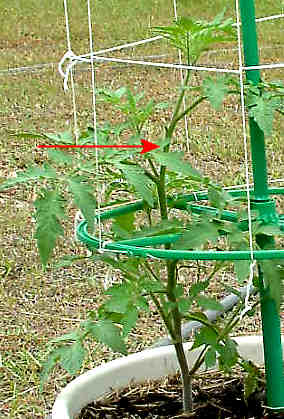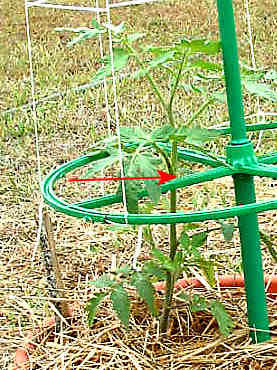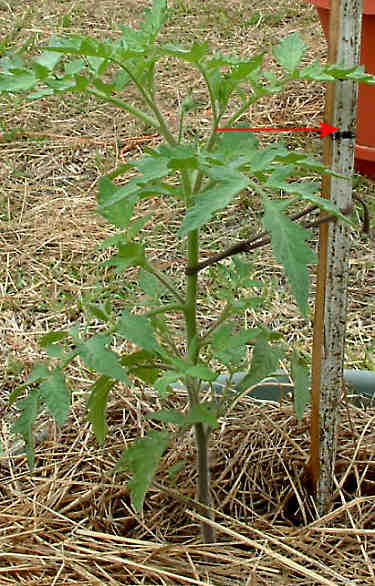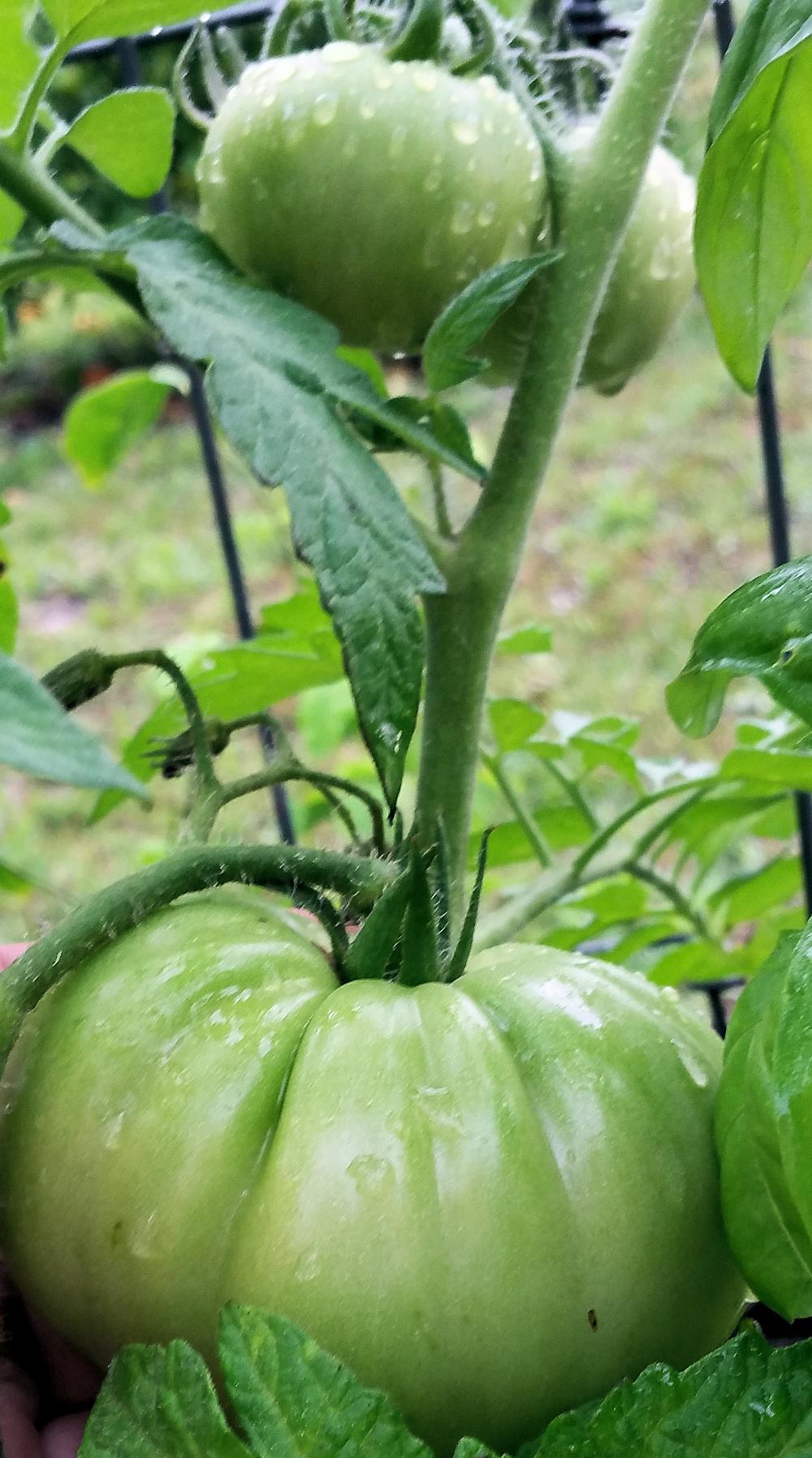Growing Tomatoes
GT Experiment Report 1
The Great Tomato Experiment is underway! This is the first report of the series, and the race is just beginning.
While you can read the full story behind The Great Tomato Experiment, a summary is as follows:
There are three plants, grown from seed from the same packet (plant variety is the heirloom tomato Pineapple).
- One plant is the control plant; it gets treated the same was as my other (non-experiment) tomatoes.
- Another plant is being grown for fruit size, per the book Giant Tomatoes.
- The third plant is being grown for productivity of harvest, per the book How to Grow World Record Tomatoes.
All three tomatoes were planted in 10-gallon containers. Because they are planted in containers, they get fed weekly, although about half strength. FYI, the red arrows in the photo indicate how big the plant was when I originally planted it.
(Note: You can click on each of the photos to see a larger version.)
Fruit Size Plant
The first plant is the one I am growing for the size of the fruit. This plant’s soil is about half and half compost and potting mix. Fertilizer has been mainly Miracle Gro for Tomatoes (half strength), as well as some kelp spray and a little bit of fish emulsion. Oh, and I did also add some worm castings.
This plant is by far the largest of the three, as far as height goes. It’s also a little bit leggier, which I suspect is from the Miracle Gro’s higher nutrient count. Because it’s in a container, the plant gets a little Miracle Gro liquid every week, at half strength. It also gets some kelp liquid once a week.
The first blossom buds appeared on this plant, just this past week. But per the book, I pinched them off — the plant needs to grow some more before setting the first fruits. (Oh boy, was it ever hard to pinch those blossoms off!)
Harvest Size Plant
This plant has been lagging behind, but now it’s starting to catch up some. The mix in the container was 100% compost. I also added worm castings, bone meal and blood meal. The plant gets fish emulsion spray once a week, and now that it’s large enough, also a drink of some (slightly diluted) fish emulsion weekly. It also got some kelp meal, and a once-a-week spray of kelp liquid (“Sea Magic”).
This plant is the stockiest of the three plants, even though it’s shortest in height. The theory behing this is that while plants grown 100% organically take longer to “take off” as far as height, they grow better and healthier once they do start to catch up.
And you know what was interesting? When I walked out to the garden at lunch, this plant was noticeably larger/taller than in the photo (taken yesterday morning). The top leaves now drape over the green bar!
Control Plant
The control plant is growing along nicely so far. It’s planting mix was about 70% compost and 30% potting soil.
As far as fertilizer, it’s been mostly organic — worm castings, fish emulsion, kelp meal and spray. I have also added some Tomatoes Alive! all-natural fertilizer. I also gave the plant a shot of Miracle Gro for Tomatoes (diluted to half-strength) about a week after I planted it . The reason I did this is because I saw the underside of the leaves had some purple veining — a good hint that the plant didn’t have enough phosphorus. It’s doing fine now, though, without any extra Miracle Gro.
As far as height and stockiness goes, it’s somewhere between the fruit size and fruit production plants on both counts. So likely I’ll quit using the Miracle Gro, and concentrate on organic methods from this point out with this plant.
When’s the Next Report?
I figure about every two weeks is a good time period between reports. So look for my next one on The Great Tomato Experiment around the end of March. Can’t wait to compare photos then!
Growing Huge Tomatoes
Are you interested in growing huge tomatoes? Would you like to see massive tomatoes on your vines? What about large volumes of tomatoes — lots and lots and lots from a single plant?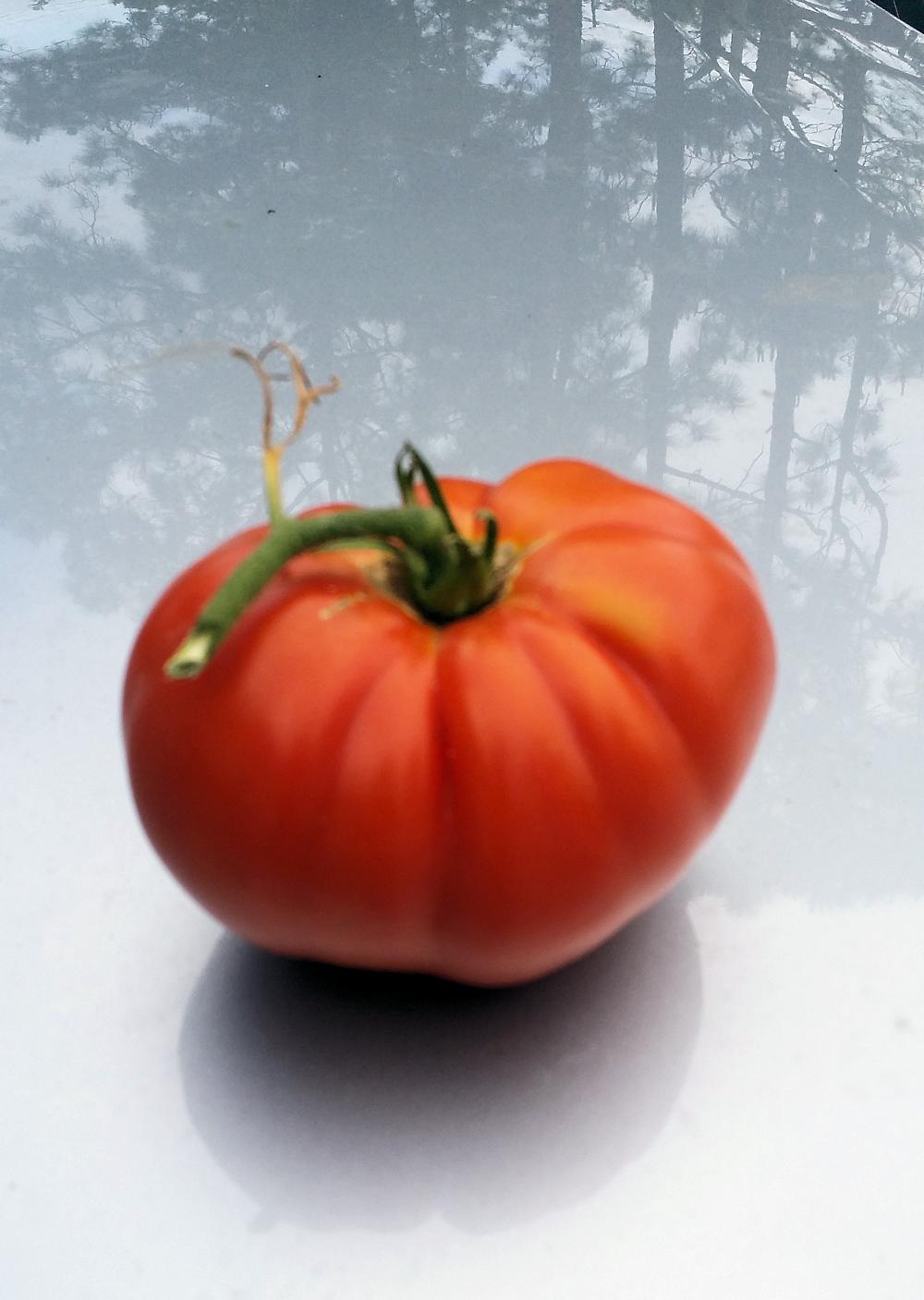
Two books have gotten my attention lately, and have intrigued me. One is about taking a tomato plant to new heights (both literally and figuratively) of production, and the other is growing humongous tomatoes.
Sound interesting? Well, if you grow tomato plants, you surely want good production — lots and lots of delicious fruits, ready when you need them (not to mention plenty to turn in to sauces with still plenty enough to give away).
And you’re likely fascinated with those huge tomatoes, weighing in at several pounds each! Each tomato is a meal in itself for several people; they are simply amazing.
The Great Tomato Experiment
With the tomato-growing weather great in my part of the country right now, I’ve decided to put the two books to the test. I’ll grow three tomato plants of the same variety, from the same seed packet.
- One tomato plant will be the control plant; I’ll grow it just as I normally do.
- One tomato plant will be grown according to the directions for the high tomato productivity.
- The final tomato plant will be grown according to the directions for making those humongous tomatoes.
The tomato variety I’ve chosen for this test is a heirloom tomato named Pineapple. It”s a bicolor, with red and gold stripes, outside and inside. Not only is it pretty to look at, but the fruit is delicious and sweet. Oh, and the tomatoes it produces pretty regularly get to be a pound or more in size. Pineapple is also a bit more disease-resistant than most heirloom tomato varieties, but like most heirlooms is indeterminate.
So, it sounds about the perfect tomato for the test, wouldn’t you say?
Hey, why not join me? Experiment right along with me if you live in the south. If you live farther north, get your seeds, books and supplies now, and run your own experiment as soon as your weather turns mild enough.
First, the Books
OK, here are the two books you’ll need for this Great Tomato Experiment. They are:
- How to Grow World Record Tomatoes: A Guinness Champion Reveals His All-Organic Secrets by Charles Wilber
- Giant Tomatoes by Marvin H. Meisner; M.D
The first book is about growing lots and lots of tomatoes. How many? Charles Wilber managed to grow over 1,000 pounds worth of tomatoes…from just four plants! While I don’t expect to grow that many, you can see what I mean by growing lots of tomatoes! My goal will be to at least double the tomato productivity of the control plant.
The second book is about growing those giant tomatoes that are heavy and huge. Can you imagine a tomato that dwarfs two hands? The tomato variety I’ve selected is already known for growing large tomatoes, but my goal is to have the tomatoes substantially bigger than the largest tomatoes on my control plant.
Next, the Seeds and Supplies
First are the seeds for the heirloom tomato called Pineapple; you’ll need a pack of these seeds for the experiment. (If bicolors aren’t your thing try Kellogg’s Breakfast.)
Next is a tomato trellis, which helps to hold up the tomato plants. I’ve selected the Tomato Tower with Nylon Trellising for both the test plants. For my control plant, I’ll use the staking system I normally use. The tomato tower is 6 feet tall, and is designed to better support the larger tomato plants, not to mention the larger tomatoes!
After that, I’ll be using the soil and fertilizers specified in each of the books for the appropriate plants.
So, below are the items I’ll be using. The two fertilizers you see are for my control plant (i.e., what I normally use). I put in the windowsill greenhouse as well, as it’s what I use for the germination phase for any tomato.
- Terracycle Tomato Fertilizer
- Sea Magic Fish Fertilizer
- Windowsill Greenhouse
- Pineapple Tomato Seeds
- Kellogg’s Breakfast Tomato Seeds
So, come on and join me — let’s have fun growing lots and lots of big, tasty tomatoes! The seeds, supplies I’m using are listed below; put your cursor over an item to get more information and/or buy it.
P.S. Don’t think you can’t follow right along with the experiment because you don’t have a yard in which to grow tomatoes — I’m growing each of my three plants in containers! But if you can (and choose to) grow your tomato plants in the ground, you’ll likely have even bigger yields. Wow!
Growing Tomatoes in Florida
Growing tomatoes in Florida, especially in South Florida, is something that I have a great deal of experience with. So, for all you Florida gardeners, here are some tips for growing some luscious, vine-ripe tomatoes of your own!
(South Florida gardeners — here are some special tips for you.)
Seasons for Growing Tomatoes in Florida – Winter
Here in South Florida, you can grow tomatoes practically year-round…with some caveats. One is that if you have ever had a frost during the winter, don’t grow a large tomato garden in winter, unless you are prepared to cover your tomato plants or you have them in containers and can bring them inside.
Here’s a sad but true story. One year I planted a gorgeous tomato garden, with at least a dozen plants (probably closer to two dozen). It had been a cool, but not cold, Winter, with sunny days. Beautiful growing weather!
Alas, one night it was expected to get down to around 40 degrees. I debated covering the plants, but figured they would be OK. They probably would have been if the temperature had stayed around 40. Unfortunately, they plunged to the low 30s, we got frost and my tomato plants died. What made it worse was that they were bearing a wonderful crop at this point! I was able to salvage some of the ripest (although still green) tomatoes, but lost most of the crop.
If you want to grow a Winter crop in South Florida, plant your seeds in September. I like to plant heirloom tomato seeds in the winter, as well as at least one variety of cherry tomato like Supersweet 100 hybrid
Spring Tomatoes
Spring is great in Central and South Florida. Generally mild with mostly sunny days, it’s a wonderful tomato-growing time. North Florida can still get chilly, though, so plan accordingly if you live in the Panhandle or around Gainesville and north.
Spring is the end of the Florida dry season, so remember to water accordingly, as the sun is getting stronger each day. Especially in South and interior Central Florida, it can get mighty hot in late Spring.
To harvest a Spring crop of vine-ripe tomatoes, start planting your seeds in December to late January. I usually plant a mix of heirloom tomato seeds, as well as hybrids. Some of my favorites include Cherokee Purple, Black Prince, Red Pear, Kellogg’s Breakfast, Celebrity, Better Bush and Supersweet 100.
Growing Tomatoes in Summer in Florida
For Florida in general, Summer can be brutal on your tomato plants. Nor only is the sun exceedingly strong, but it’s hot and humid — excellent conditions for mildew and gray spot to develop. I tend to not grow many tomatoes in Summer in Florida — I used to, but the heat and humidity just made it too difficult to get a good harvest.
Another problem you may run into in South and Central Florida is plants growing too fast and developing lots of cracks. So the tomato varieties I do grow are generally cherry- to medium-sized.
For Summer tomatoes, I sow seeds sometime in March.
Tomato Garden in Fall
Fall can be a nice time of year to grow tomatoes, at least in South Florida. If you live in North Florida and the Panhandle, you’ll want your main crop in for harvest by mid to late October. Central and South Florida can extend that a bit into November.
Fall’s main issue is how cold it gets how fast. Here in South Florida, we can get nighttime lows in the low 40s as early as November. I know this year, it’s been into the 20’s and 30’s in North Florida by late November — too cold for warmth-loving tomatoes. So the further north in Florida you live, the more you’ll want to consider growing your tomatoes in containers that you can bring inside when you get really cold snaps. Or — grow early tomatoes, so they ripen before the really cold weather hits.
For Fall, I like some of the cherry tomatoes and a bush type like Better Bush hybrid tomato
For a fall crop, I sow the seeds around mid-July.
Heirloom Tomato Seeds
Heirloom tomato seeds aren’t any more difficult to plant than hybrid tomato seeds. The trick is finding the seeds you want to grow — and there is quite a variety!
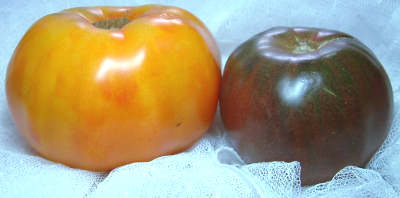 But before I talk more about the seeds, let’s talk a little about what makes an heirloom tomato an heirloom.
But before I talk more about the seeds, let’s talk a little about what makes an heirloom tomato an heirloom.
About Heirloom Tomatoes
So what exactly is an heirloom tomato — what makes it different than “regular” tomatoes?
First of all, heirlooms are produced naturally from seeds. In other words, if you save seeds from an heirloom, the resulting plants will be just like the parent. Not so with a hybrid tomato, because you’ll never know what you’ll get! This is because a hybrid is a cross between two varieties, neither of which may be great on their own (but wonderful together).
So that’s one; an heirloom produces plants like itself. The next is how long the plant has been producing tomatoes; that is, how many generations have been produced with consistent results. I’ve heard quite a few different numbers — 100 and 50 seem to be the two that pop up the most. Some people use the year 1945 as the cutoff; if the tomato variety was growing in 1945 with consistent fruit results, the plant can be considered an heirloom.
One other thing about heirloom tomatoes is their taste! In general, the heirlooms produce fruits with a full, rich tomato taste. Many of the heirloom varieties produce big fruits — beefsteak or larger. If you love tomato sandwiches, you’ll love these tomatoes.
There is one downside, though. Heirloom tomatoes are pretty strong growers, but they are not necessarily disease-resistant. So especially if you live in a hot and humid climate, you need to keep a closer eye on your heirlooms. (But it is worth it!)
Heirloom Tomato Seeds
There are tons of varieties or heirlooms out there, and I’ve tried many of them in my day. But I keep coming back to a few that are tasty, but that also have fun results! I like red tomatoes for sure, but I also get a big kick out of the purple and the striped tomatoes. That being said, here are a few of my favorite heirloom tomato varieties.
Brandywine Pink: Whenever I ask my husband what tomatoes he’d like me to grow, Brandywine always tops the list. I love the big fruits and the juicy meat of this heirloom tomato. The seeds germinate fairly quickly and transplant easily. The problem for me, though, is that it just isn’t a prolific producer of tomatoes in hot and humid climates. I get maybe one fantastic tomato (huge), a couple medium-sized and maybe one or two small ones. When it gets really hot and humid, no more tomatoes. But for taste…I don’t think I’ve had another variety beat it (yet). Brandywine Pink is an indeterminate potato-leaf plant, mid to late season. And be warned — the plants can get huge.
Cherokee Purple: This is a fun tomato because it’s purple! OK, it’s not the kind of bright purple you might be imagining; it’s more of a dusky violet. The name comes about because it’s believed to have originated among the Cherokee people, and is over 120 years old. These are big tomatoes, which seem to average between 10 and 12 ounces. Sweet and meaty, they are great for salads and sandwiches. But the purple does take a little getting used to. Thin-skinned, you will need to eat these soon after picking. Cherokee Purple is an indeterminate tomato that is mid-season.
Kellogg’s Breakfast: This is an orange beefsteak tomato. Now orange tomatoes have the reputation of being milder-tasting, but not so with Kellogg’s Breakfast — it has a full-on tomato taste! I’ve grown it in the ground and in (big) containers — grew well both ways. The tomatoes were big and the plants were surprisingly prolific for such a large beefsteak. Kellogg’s Breakfast is an indeterminate regular-leaf tomato, and the plants can get very large. There is also a Kellogg’s Breakfast version (KBX) that is potato-leaf plant, but I have never grown it. Mid-season.
Red Pear: I cannot resist these cute little tomatoes! Cherry-sized, perfect for salads or garden snacking (the fate of most of mine – few actually make it into the house). As you may guess, they are pear-shaped. Not the sweetest, but it is tasty and does tend to be prolific! The plants I have grown tended to be manageable in size, and grew well in the ground and in a container. Indeterminate, regular leaf, mid-season.
Big Rainbow: The last of the heirloom tomato seeds I’ll talk about today is one that bears monster fruits — Big Rainbow. It’s also a striped tomato color, with gold and red, so it’s very pretty to look at. Not to mention great to eat! This heirloom tomato can get fruits up to 2 pounds in size! Naturally that’s with optimum growing conditions, but 1+ pounds tomatoes can be expected on average. This tomato is also exceptional in that it’s one of the more disease-resistant of the heirlooms. (Reason enough to grow it.) Big Rainbow is an indeterminate, requires strong staking (possibly multiple stakes). It bears fruit roughly 90 days out, so only think about growing it if you have a long growing season.
So there you go; some wonderful heirloom tomato seeds for you to consider planting. For additional information on planting, check out the post on planting a tomato garden.
Tomatoes and Farmer’s Markets
You might be asking, “why grow my own tomatoes when I can buy them fresh at the farmer’s markets?”. And it is a good question. Here’s a little story about my latest venture to a farmer’s market.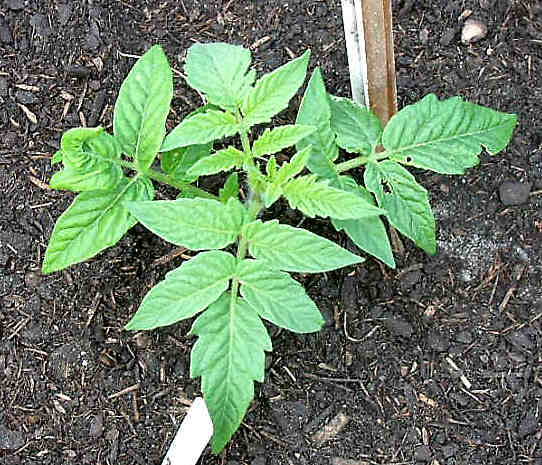
I was looking for tomatoes (since I planted late don’t have anything ripe), cucumbers, strawberries — foods of that nature. Strawberries I found, and they were fantastic! Cukes were OK. But tomatoes…were plastic-smelling. They didn’t seem to be any different than what was sold in the grocery store!
So I got into a conversation with a few of the vendors, and they admitted that they buy tomatoes from a common grower, who also supplies the local grocery stores. Tomatoes are picked green, held in cold storage, then when needed — gassed to “ripen” quickly.
At least around here, vine-ripened tomatoes aren’t among the vegetables brought to the farmer’s markets very often. Why? Because vine-ripened tomatoes are softer and bruise (and squish) more easily when transporting them. In other words, they aren’t cost-effective to grow and sell on their own.
- NOTE: I know not all farmer’s markets sell only the “supermarket variety” tomatoes — some vendors actually do offer heirloom and hybrid tomatoes that were vine-ripened. Sadly, that wasn’t the case where I live.
Growing Your Own Vine-Ripened Tomatoes
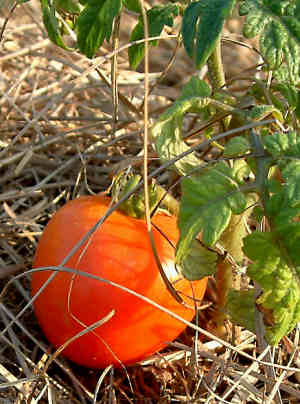 So it seems that unless you have a U-Pick-It type farm in the neighborhood, you won’t have access to honest-to-goodness vine-ripened tomatoes. Unless, of course, you grow your own.
So it seems that unless you have a U-Pick-It type farm in the neighborhood, you won’t have access to honest-to-goodness vine-ripened tomatoes. Unless, of course, you grow your own.
And really, you don’t need a lot of room to grow a tomato plant; you can even do it in a 3-gallon container! So even if all you have is a small balcony, you have room for really fresh tomatoes.
I’ve even heard of people who have grown their tomato plants inside the home, in a sunny location. Of course those were the miniature cherry-sized varieties.
Even though I have a lot of room to grow my plants, I do like to grow some in containers. I’ll tell you a story sometime about how growing tomatoes in the ground in Summer and Winter have been disastrous for me. For now, suffice to say that it’s better for the plants if I can move them around if needed.
Buying Tomato Seeds for Growing
I like trying out different kinds of tomatoes (not to mention other veggies) and my favorite all-around seed vendors for tomatoes are strangely enough a tie between Amazon and Tomato Growers Supply. Amazon has a wider variety, but Tomato Growers Supply has more information about the varieties it does carry.
Which is best? That decision I will leave up to you!
